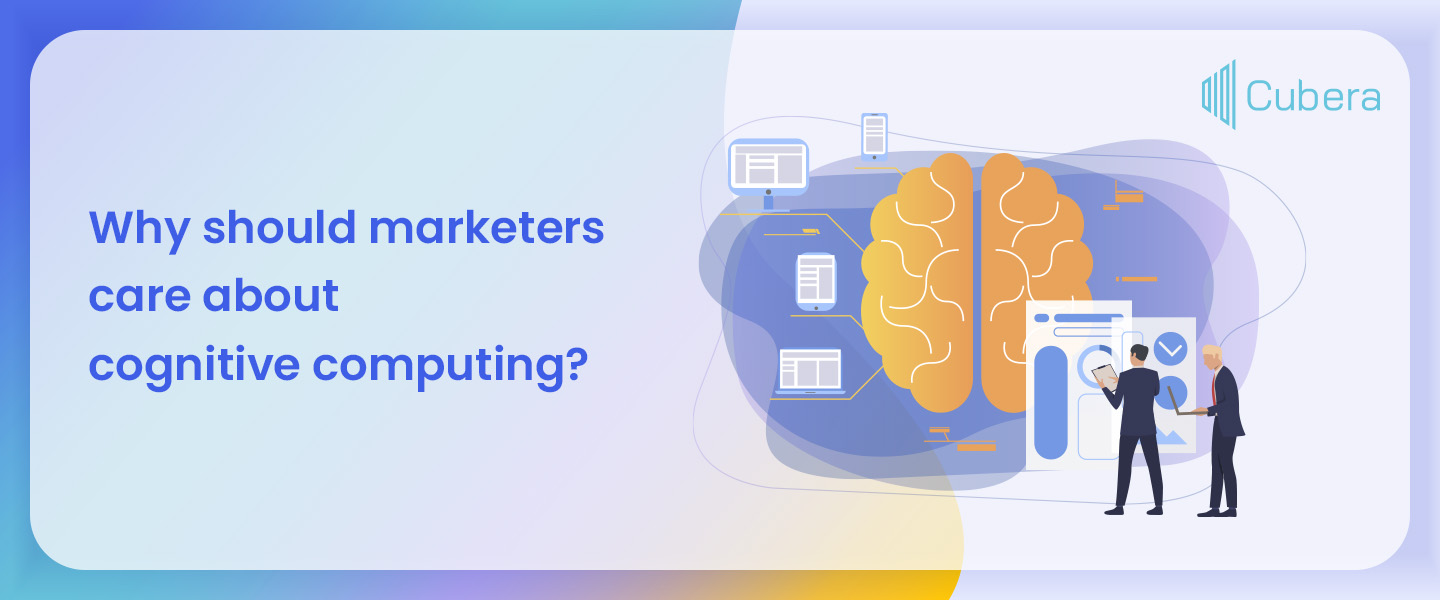Why Should Marketers Care About Cognitive Computing

Cognitive computing has become one of the many buzzwords around the digital realm as of now. The mere thought of being able to create a system with all the bells and whistles of the human thought process is mesmerizing. As of 2019, the global cognitive computing market was valued at $11.11 billion, by 2027 the same figure is projected to reach a whopping $72.26 billion. Turns out that Omni channel advertising when combined with cognitive computing techniques works wonders for advertisers and marketers.
Since modern-day marketing revolves around the efficient exploitation and cycling of the consumers’ data, AI and Machine Learning have stepped up their game drastically. Cognitive computing is often identified as a subset of AI and for the right reasons.
This is how cognitive computing changes everything
Although AI is often overhyped in the current digital space, its stellar growth over the last few years cannot be denied. Cognitive computing, being the promising subset of AI has started to become a great asset for marketers. The changes it brings forth are not only welcome additions but it also brings forth a wave of paradigm shifts that weren’t seen before.
Here’s what’s cooking in the Cognitive computing realm and how it is impacting the marketing domain for the greater good:
Access to unstructured data
As mentioned above, marketing revolves around the data generated by the customers. However, for a long time, this data hasn’t been used the right way. While Omni channel advertising has gained traction recently, the emphasis on data quality has gained the spotlight only recently. The data realm is filled to the brim with unstructured data such as, images, audio files, websites, etc. Close to 80% of the data that we come across is unstructured. While the insights that you need might be there, the same cannot be said about the ease with which this information can be extracted.
Cognitive computing enables you to enter the realm of unstructured data and extract the information that you need to keep your campaign growing at the right pace. This enhanced capability of processing huge amounts of data if done at the right time can yield great results. Close to 46% of early adaptors of cognitive computing experienced enhanced security with reduced risks.
Setting the tone
While the direct correlation between marketing and cognitive computing can be a bit tricky to establish, one prominent sector that benefits from cognitive computing is tone setting. Every marketing strategy involves content in written form. Even the images require written content to relay the necessary data. Here’s the thing, the piece of content relaying the information at the end of the day has to have a tone.
And just like every piece of media ever written, the tone of this content plays a major role in determining the relevance and its ability to establish interest in the minds of the audience. Taking Natural Language Processing into account, cognitive computing can be used to deploy sophisticated tools that ensure that the right message is sent at the right time, to the right place. Content tone analyzing tools can help determine and enhance the way marketing content is written and portrayed to the masses.
Systematic data tracking
Another benefit of cognitive computing is its capability to identify, track, and allocate data to the party looking for it. For the most part, companies store the data of their choice in silos, while it helps them store all the data they like, it becomes a bit difficult in finding the relevant pieces for specific operations. Cognitive computing helps establish a relationship between the demand and the data required for the same. What it does is it finds the relevant data from the silo and pass it to the desired operation.
Interactive ad creation
Ad creation process has become more interesting with the emergence of cognitive computing on the marketing front. Brands like Toyota have recently introduced a two-way interactive ad that allows customers to establish contact and talk to their brands on the products on offer. This process takes into account multiple aspects such as natural language processing, behavior analysis, and machine learning to name a few.
It has brought about a change in the way ads have been made up until now. Digital marketing relies upon running a ton of successful ads (especially the Omni channel advertising realm) with the right messages. This feature not only allows brands to experiment with the way ads are made but also creates a dynamic structure that is sure to give new insights to the system with every human interaction. Eventually, this feature shall increase the knowledge pool of the campaign and shall help target the necessary demographics.
And that’s all folks
Predictive analysis is one major aspect that has been using cognitive computing quite frequently. With a market size of $6.50 billion as of 2019, predictive analysis software have started to become quite mainstream now. With the aforementioned points, as a marketer, you can definitely be sure that cognitive computing works, and is perhaps the way to the future as well. Speaking of the way to the future, if you’re looking for the right avenues and tools to start cloud advertising in India with efficient insights and the capability to monitor cross-device analytics, Cubera is the name of the game. With state-of-the-art features and tools at your disposal, its time you boost your ROAS like never before.


